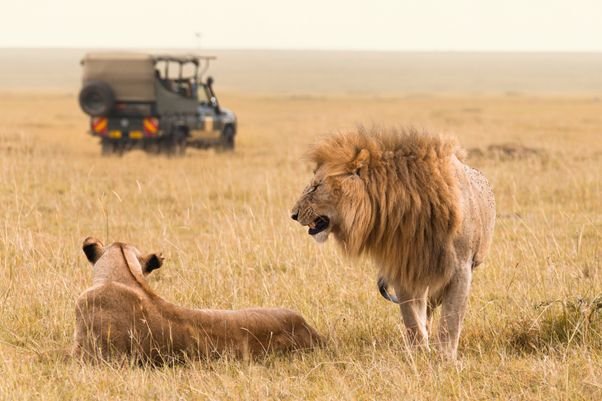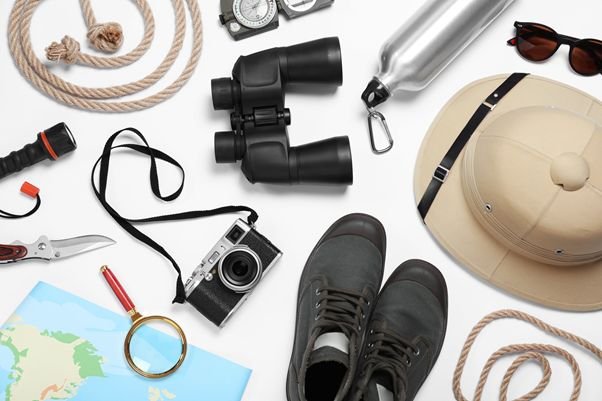
If you’re dreaming of the African bush—where lions roam free, elephants trumpeting in the distance, and even the dung beetles seem to have a strict work ethic—you know that packing for safari is as wild as the adventure itself. In this guide, we’ll take you through the must-haves and “better left behind” items for your safari trip, with a few witty side notes and clever hacks to make your journey lighter (both in luggage and in spirit).
The Essentials You Absolutely Need
1. Clothing in Neutral, Earth-Tone Hues
• Why: Bright colours and flashy prints not only scare off the local wildlife (and, rumour has it, the tsetse flies are attracted to brights) but also can make you stick out like a sore thumb at a lodge.
• Hack: Invest in a capsule wardrobe cotton tees, convertible pants, and lightweight layers.
Pro Tip: Treat your existing clothes with permethrin spray for insect protection—no need to splurge on “safari-treated” outfits!
2. Layering Pieces for Chilly Mornings and Evenings
• Why: Although the bush may feel like a tropical paradise by midday, early dawn and dusk can be surprisingly brisk—think “safari chill” meets “unexpected polar plunge.”
• Must-Haves: A lightweight fleece jacket, windbreaker, and a packable down vest (bonus: compresses into a tiny cube).
• Hack: Wear your bulkiest layer on the plane to save space in your soft-sided bag.
3. A Dependable Safari Hat and Sunglasses
• Why: The sun in Africa is relentless. A wide-brimmed hat not only protects your face but also doubles as an instant conversation starter (“Where’d you get that hat?”).
• Hack: Look for hats that are breathable, packable, and come in neutral tones. Pair them with polarized sunglasses to combat glare during those epic game drives.
4. Footwear for All Terrains
• What to Pack: A pair of sturdy closed-toe shoes (or trail-running sneakers) for those rugged bush walks and a pair of comfortable sandals or flip-flops for camp relaxation.
• Hack: Avoid packing multiple shoe types—less is more. Wear your bulkiest pair during travel, and leave room for only one backup.
5. Camera Gear & Binoculars
• Why: Whether you’re a budding photographer or just like snapping selfies with elephants in the background, a good camera with a telephoto lens (and extra batteries/memory cards) is essential.
• Hack: Download and Animal and bird guide for the area that you are visiting on your phone. This will make looking up any bird or animals easier and is lighter than a book.
6. Practical Accessories & Gadgets
Must-Haves:
• A lightweight daypack or hip pack (for keeping your camera, water, and snacks close at hand)
• A reusable water bottle (hydration is key in the bush)
• A compact flashlight or headlamp for those early morning wake-ups
• A money belt to keep travel documents and cash safe
• Hack: Use packing cubes and zip-lock bags to keep small items (like chargers and toiletries) organized and protected from spills.
7. Travel Documents & Health Essentials
• What to Pack: Passport with necessary visas and vaccination certificates (yellow fever, etc.), travel insurance details, and a small first-aid kit (include your regular medications, plus extra pain relievers and electrolyte powders).
• Hack: Scan and email copies of all vital documents to yourself—just in case the jungle decides to “help” you lose your paper trail.
What NOT to Pack
1. Avoid Bright Colours and Camouflage
• Why: Wildlife experts advise against wearing vibrant hues or camouflage. Bright colours can disrupt animals’ natural behaviour, and in some countries, camouflage is even illegal!
• Tip: Stick to earthy tones like beige, khaki, olive, and grey.
2. Don’t Overpack – Less is More!
• Why: Safari camps often offer free daily laundry service. You don’t need a “just in case” outfit for every hour of your trip.
• Tip: Limit yourself to two or three interchangeable outfits for daytime, and one or two for evenings.
• Hack: Lay everything out on your bed, divide into “must-have” versus “nice-to-have” piles, and pack only from the “must-have” side.
3. Leave the Heavy Luggage at Home
• Why: Most bush flights and safari vehicles are designed for soft, flexible luggage—not those bulky, hard-shell suitcases that scream “tourist.”
• Tip: Invest in a high-quality soft-sided duffel bag that meets carry-on dimensions.

Bonus Hacks and Insider Tips
• Use a Pillowcase as a Camera Cover: Dust is everywhere in the bush. Slip your camera into an old pillowcase when not in use to protect it (and double as a makeshift sunshade on a bumpy ride).
• Wear Layers on the Plane: Save space by wearing your heaviest jacket, sturdy boots, and hat during travel.
• Bring a Little Extra for the Unexpected: A spare pair of socks, a reusable snack pouch for granola bars or mints, and even a few cigars (if that’s your style) can be lifesavers in the wild.
• Keep Your Tech Charged: Don’t forget universal plug adapters and a portable USB battery pack; many lodges offer charging stations, but it’s best to be prepared.
• Embrace Minimalism: Remember—the less you pack, the more you can enjoy the adventure without lugging extra weight. Your future self (and your back) will thank you!
Packing for an African safari is part art, part science, and a whole lot of adventure. With a strategic mix of essentials, a few thoughtful hacks, and a sense of humour (don’t forget that!), you’ll be well-prepared to tackle the unpredictable beauty of the bush. Whether you’re a seasoned traveller or a first-time safari-goer, pack light, pack smart, and—most importantly—pack your sense of adventure!
Happy travels, and may your safari be filled with unforgettable encounters (and plenty of good laughs along the way)!
